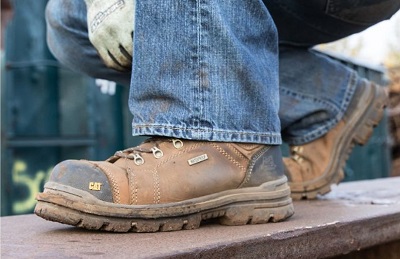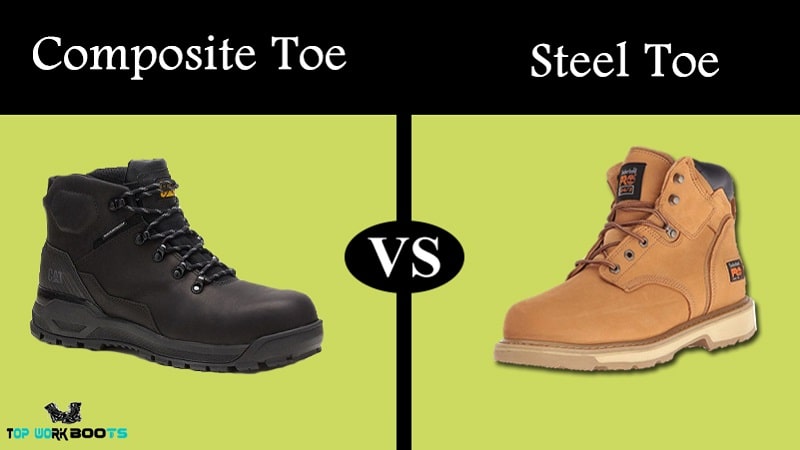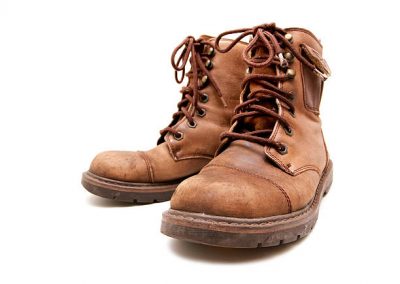Composite Toe Vs Steel Toe
by Jason Flores
Buying work boots can be tedious if you want a quality safety-toe boot. The proper safety-toe boots are vital if you are working in a hazardous environment. If you are aware of the difference between composite toe vs steel toe boots, you will make a wise judgment on which one is best to protect your feet.
Composite toe vs Steel toes are the two significant boots toes that are known to be safe. Most people, however, do not understand what makes them different. To make you understand the difference, we did all the legwork testing on the two to know which of them is better and that will meet the needs of your working environment.
Contents
Composite Toe Vs Steel Toe Comparison
Composite Toe Work Boots

These are boots that have a composite safety toe that is made from non-metal composite materials that have been combined. Such materials include plastic, carbon fiber, fiberglass, and Kevlar. These non-metals composite material is light and ideal for some specific works.

The composite toe is non-magnetic and non-metallic, something that is a big plus to some work areas. The composite toe provides more insulation against cold weather. The overall weight of the composite toe boot reduces fatigue, and when combined with rubber, they are durable.
Pros
- They are lighter
- Resistant to electric
- Do not dent or shatter
- Better insulation against cold weather
- Has a reduced fatigue level
Cons
- They lack puncture protection.
- Seem to be expensive
Steel Toe Work Boots

Steel toes are the classic protective boots that feature a piece of steel in the toe area to protect your toe from a number of hazards in the work area. The midsole or toe box is made of steel plates that provide extra protection against dangerous work.
They offer the highest heavy impact and puncture protection and also electrical conductivity protection. The steel toe work boots are shatter-resistant, and this makes them strong enough to withstand a hazardous environment. The steel toe dent rather than shattering provides additional safety to the toe and keeps them protected from heavy object fall.
Pros
- They are flatter and much spacious
- The boot is abrasion resistant
- They do not break or shatter
- Affordable
Cons
- The boot seems to be heavy, and you get fatigued easily
- Not good with electrical work
- The design is bulkier
The Difference Between Steel Toe vs. Composite Toe
Summary Table
| Composite toe | Steel toe | |
| Material | Carbon, fiberglass, plastic | Steel |
| Weight | Lighter | Heavier |
| Comfort | More comfortable | Less comfortable |
| Price | Expensive | Less expensive |
| Cold weather | Does not conduct cold | Conducts cold |
| Protection | good | More protective |
| durability | It decreases after accident | More durable |
| Set off metal detector | Do not set off | Yes, only in some cases |
To understand the difference in these boot toes, one must dig deep into them on how they work and the material used. The differences are experienced in,
Material
Steel toe caps are made of old steel. In contrast, composite toe caps are made of a combination of different non-magnetic and non-metallic materials like Kevlar, carbon fiber, Thermoplastic polyurethane, or fiberglass. Steel toe, therefore, sets off metal detectors as opposed to composite toe.
Heavy Impact and Puncture Protection
Compared to the composite toe, steel toe provides heavy flat protection and this means that they are ideal for serious work. They can withhold larger loads without breaking as opposed to composite toe. Steel toe boots are recommended in doing heavy hazards or a dangerous tool like chainsaws.
Steel toe is also good when it comes to puncture resistance. According to ASTM standards, composite and steel toe can withstand the pressure exerted on them. However, if the pressure is too heavy, the composite toe will break and shatter.
Comfort and Style
Due to the non-metallic material in the composite toe, they are 30 percent lighter than a steel toe. This makes the composite toe boots ideal for those people that stand and walk for long hours. Despite that they are heavy, steel toe developers have recently used high technologies that have made them lighter.
The recent composite toe boots are heavy because they use thick non-metallic material instead of a single steel layer that meets the safety standards. There are a few ranges of styles that come from the composite toe. Steel toe boots will look nicer to men and women who want to look stylish.
Insulation
Composite toes don’t conduct heat or cold to the boot as the steel metal toe does. This means that steel toe boots are uncomfortable if exposed to extreme temperatures, especially during the cold season. This makes the composite toe better at keeping your feet warm in cold seasons than the steel toe. If you are carrying work in an environment with extreme weather conditions, use a composite toe.
Electrical Conductivity
Lack of electrical conductivity in composite toe boots is a big plus; it makes them ideal for handling high-risk electrical components like electricians. The composite toe does not feature metallic components around them, making it perfect for live wires.
Despite having a metallic component, steel toe boots have met the electrical Hazard ASTM testing standards. They have an HZ feature that can withstand voltage of up to 18000V at a dry condition.
Durability
With durability, both steel toe and composite toe are durable. However, due to the steel material nature of the steel toe cap, they are a bit durable in case of continuous compression due to the heavy load. This is because the composite toe is non-metallic and cannot withstand high compression like steel toe.
The composite toe can save your toe when a heavy load falls on it, but with time it will crack. It, therefore, needs to be changed once this happens. But with the steel toe, there is no need because it can’t crack or break. But generally, the two are durable, although steel toe is more durable.
Metal Detector
Because composite is made of non-metallic, they do not set off detectors as steel toe does. This makes composite toe boots ideal for workings that work in security checks, airports, and nuclear stations. The modern steel toe is, however, designed to pass metal detectors. But know that there is some risk associated with steel toe passing the metal detector test.
Protection
Many people believe that a composite toe is better for electrical hazard protection than a steel toe. This isn’t true because even steel toe is met in that they meet the ASTM safety standards of electrical hazard protection. The hardness of the material is another protection factor to check.
Of course, being made of steel material, steel toe provides better protection to any falling object than composite toes. The danger here is that the steel toe is heavy and that if heavy loads fall on, it may break and cut off your toes, something that isn’t experienced in composite toe.
The Cost
The composite toe vs. steel toe also differs in the amount they cost. Steel toe boots are cheaper compared to composite toes.
Final word
To decide on which of the two is better than the other is difficult because they have similar features. However, steel toe is a somehow heavy and cheap option that is ideal for those working in heavy-duty works like mining areas, etc. however, and they cause fatigue, but good enough for such jobs.
On the other side, the composite toe is a bit expensive but has the best features that can protect you. They have a reduced weight that doesn’t get fatigued quickly. It is resistant to electrical hazards and provides some versatility to your job. Those workers who interact with their metals daily or airport employees are the best boot they need to use.
 |
 |
 |
 |

About Jason Flores
Jason Flores is a multi-talented individual whose unique journey has led him to blend his passion for craftsmanship and fashion into a creative endeavor. During his formative years, he found himself immersed in the world of handiwork, spending countless hours in his grandfather's workshop. These early experiences allowed him to develop a deep understanding of practical skills and a keen eye for detail.
Simultaneously, Jason harbored an innate love for fashion, drawn to the artistry and self-expression it offers. As he grew older, he recognized the potential to combine his proficiency in craftsmanship with his fashion sensibilities. This realization led him to a path where he began to explore and write about the intersection of fieldwork fashion.
Thoughts on "Composite Toe Vs Steel Toe"
 |
 |
 |
 |
Get FREE Boots Gifts now. Or latest free toolsets from our best collections.
Disable Ad block to get all the secrets. Once done, hit any button below
 |
 |
 |
 |